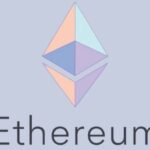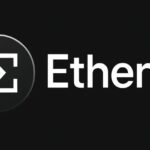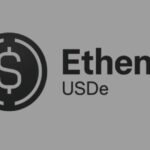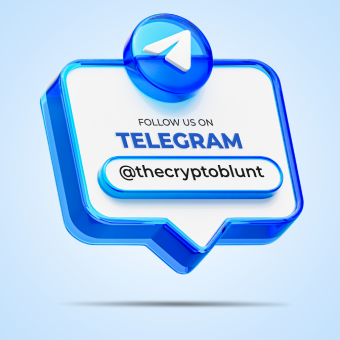Polygon is not merely another blockchain; it is a sophisticated, multi-faceted platform designed specifically to address Ethereum’s limitations. Often referred to as a “Layer 2” solution, Polygon provides a framework for creating and connecting diverse blockchain networks, offering faster, cheaper, and more efficient transactions while maintaining a strong connection to Ethereum’s robust security layer.
- Your Foundational Knowledge: Understanding the Blockchain Basics
- What is the Polygon Ecosystem? A Suite of Scaling Solutions
- Real-World Applications and Benefits of the Polygon Ecosystem
- Dispelling the Myths: Addressing Common Misconceptions About Crypto and Polygon
- Getting Started: A Beginner’s Guide to the Polygon Ecosystem
This comprehensive guide will demystify the Polygon Ecosystem. We will explore the fundamental concepts of blockchain technology, dissect Polygon’s innovative architecture (including the transformative Polygon 2.0 upgrade), understand the role of its native cryptocurrency (MATIC/POL), address common misconceptions about the crypto space, and highlight the real-world applications driving mass adoption. By the end, you’ll grasp why Polygon is a critical component in building a scalable, accessible, and user-friendly Web3.
Your Foundational Knowledge: Understanding the Blockchain Basics
Before diving into the specifics of Polygon, it is essential to understand the core concepts that underpin this ecosystem and the broader world of Web3.
1. Cryptocurrency: Digital Value, Secured by Math
A cryptocurrency is a form of digital money that uses cryptography (advanced mathematical security) to secure transactions and verify asset ownership. Unlike traditional currencies controlled by central banks, cryptocurrencies operate on decentralized networks, meaning no single government or corporation manages them.
Polygon’s native token, which is currently MATIC and is transitioning to POL (Polygon Ecosystem Token), is used to power the network, pay transaction fees, and participate in governance.
2. Blockchain: The Immutable Digital Ledger
Imagine a shared, continuously growing digital record book where every entry (transaction) is recorded. This is a blockchain. Transactions are bundled into “blocks,” and each block is chronologically and cryptographically linked to the previous one, forming an unbroken “chain.” This structure ensures immutability—once data is recorded on the blockchain, it is nearly impossible to alter or delete without the consensus of the entire network. This provides transparency, security, and trust without needing intermediaries.
3. Decentralization: Shifting Power to the People
Decentralization is the core philosophy of blockchain technology. It refers to distributing control and decision-making authority across a network of participants rather than concentrating it in a single entity.
In a decentralized system like Polygon:
- No single point of failure: The network remains operational even if certain nodes go offline.
- Censorship resistance: No single authority can unilaterally stop a transaction or shut down the network.
- Trust through transparency: Users rely on the transparent rules of the protocol and the collective verification of the network, not on a single institution.
4. Consensus Mechanisms: Achieving Network Agreement
In a decentralized environment, how do thousands of independent computers agree on the validity of transactions and the state of the blockchain? They rely on a consensus mechanism.
- Proof of Work (PoW): Used by Bitcoin, PoW requires computational power (mining) to solve complex puzzles. It is secure but energy-intensive.
- Proof of Stake (PoS): Used by Ethereum (post-Merge) and Polygon, PoS is significantly more energy-efficient. Validators “stake” (lock up) cryptocurrency as collateral to validate transactions and create new blocks. Validators are selected based on their stake and are rewarded for honest participation, while dishonest behavior results in losing their staked assets (slashing).
Polygon primarily utilizes a Proof-of-Stake (PoS) consensus mechanism for its widely used Polygon PoS chain, which is highly efficient and environmentally friendly compared to PoW.
Consider adding an infographic here: “The Blockchain Basics.” Visually representing a decentralized network, a chain of blocks, and the difference between PoW and PoS.
5. Layer 1 vs. Layer 2: Understanding Scalability
To understand Polygon, you must understand the distinction between Layer 1 and Layer 2 blockchains:
- Layer 1 (L1): These are the base blockchains (e.g., Ethereum, Bitcoin). They handle consensus and security, but can struggle with scalability as network activity increases, leading to high transaction fees and slow speeds.
- Layer 2 (L2): These are protocols built on top of Layer 1 blockchains, designed to process transactions faster and cheaper off-chain, then submit the finalized data back to the Layer 1 for security and finality. Polygon is a prominent Layer 2 solution for Ethereum.
What is the Polygon Ecosystem? A Suite of Scaling Solutions
The Polygon Ecosystem is an extensive framework offering various scaling technologies to empower developers to build efficient, scalable decentralized applications (dApps) on Ethereum. Polygon’s approach is unique because it offers a “modular” system, providing different tools for different needs.
The Polygon Architecture: Beyond a Single Chain
While Polygon is most famous for its Polygon PoS chain, the ecosystem is far broader, evolving into a network of interconnected chains.
1. The Polygon PoS Chain (The Sidechain)
The Polygon PoS (Proof-of-Stake) chain is the most widely adopted component of the Polygon ecosystem. It is an Ethereum-compatible sidechain that operates parallel to the Ethereum mainnet.
- EVM Compatibility: The Polygon PoS chain is fully compatible with the Ethereum Virtual Machine (EVM), meaning developers can easily migrate their dApps from Ethereum to Polygon without significant code changes.
- High Speed, Low Cost: Polygon PoS offers significantly faster transaction speeds and drastically lower transaction fees compared to Ethereum.
- Consensus: It uses a sophisticated Proof-of-Stake mechanism. While it has its own consensus, it periodically submits “checkpoints” (snapshots of transactions) to the Ethereum mainnet, leveraging Ethereum’s security for finality.
2. Polygon zkEVM (The ZK Rollup)
Polygon has made significant investments in Zero-Knowledge (ZK) technology, which is considered one of the most promising scaling solutions for Ethereum.
- ZK Rollups: ZK Rollups bundle thousands of transactions off-chain and generate a cryptographic “proof” (a ZK proof) that verifies the validity of those transactions without revealing the data itself. This proof is then submitted to the Ethereum mainnet.
- Polygon zkEVM (Ethereum Virtual Machine): This is Polygon’s flagship ZK rollup. It provides EVM compatibility, allowing developers to deploy Ethereum dApps while benefiting from ZK-powered scalability and the security of the Ethereum mainnet.
3. Supernets (App-Specific Chains)
Supernets are Polygon’s framework for creating customized, application-specific blockchain networks. They offer a tailored solution for businesses or dApps with unique requirements.
- Modular and Customizable: Developers can choose their consensus mechanisms, token models, and features.
- Security: Supernets can be secured by a pool of validators (similar to the Polygon PoS chain) or leverage Ethereum for enhanced security.
4. Polygon 2.0: The Unified Vision
Polygon is currently undergoing a major evolution toward Polygon 2.0. This upgrade aims to transform Polygon from a collection of diverse scaling solutions into a seamless “internet of blockchains.”
- Interoperability: Polygon 2.0 focuses on creating a unified network where all Polygon chains (Supernets, zkEVM instances, etc.) can communicate and transfer value instantly and securely using ZK technology.
- Shared Liquidity: The goal is to make it feel like all chains are part of a single, highly scalable ecosystem, allowing users to move assets between chains frictionlessly.
- The POL Token: Polygon 2.0 introduces a new native token, POL (Polygon Ecosystem Token), which is designed to replace MATIC. POL has enhanced utility, allowing validators to secure multiple Polygon chains simultaneously.
Consider adding an infographic here: “Polygon Architecture Overview.” Visually representing Ethereum at the base, Polygon PoS and Polygon zkEVM as Layer 2s, and Supernets as interconnected app-specific chains, highlighting the transition to Polygon 2.0.
The Role and Utility of the MATIC and POL Tokens
The native utility token of the Polygon ecosystem has historically been MATIC. However, with the rollout of Polygon 2.0, MATIC is being phased out and upgraded to the new POL (Polygon Ecosystem Token). While the transition is ongoing, both tokens serve critical functions within the ecosystem.
- Staking and Network Security: Users can stake MATIC (and eventually POL) to participate in the network’s Proof-of-Stake consensus. Validators who stake tokens are responsible for validating transactions and securing the network. Stakers are rewarded with newly minted tokens and a portion of transaction fees.
- Transaction Fees (Gas): MATIC (and POL) is used to pay for transaction fees on the Polygon network. Because Polygon’s fees are typically fractions of a cent, this makes transactions accessible to everyone.
- Governance: MATIC/POL holders have governance rights, allowing them to participate in voting on proposals regarding the future development and direction of the Polygon network.
- The Upgrade to POL (Hyperproductive Asset): POL is designed to be a “hyperproductive” token. In the Polygon 2.0 architecture, POL allows validators to secure multiple Polygon chains (e.g., the Polygon PoS chain and various Supernets) simultaneously with a single stake, maximizing security and efficiency across the ecosystem.
Real-World Applications and Benefits of the Polygon Ecosystem
Polygon’s focus on scalability, efficiency, and Ethereum compatibility has attracted a vast ecosystem of developers and companies, leading to significant real-world adoption.
1. Driving Decentralized Finance (DeFi) Adoption
- The Problem: High gas fees on Ethereum made DeFi inaccessible for everyday users, particularly for small transactions.
- Polygon’s Solution: Polygon’s low fees and fast speeds have made DeFi transactions affordable and accessible. Major DeFi protocols like Aave and Uniswap have deployed on Polygon, enabling users to lend, borrow, and trade assets efficiently.
- Benefits: Polygon has lowered the barrier to entry for decentralized finance, fostering broader participation in Web3 financial services.
2. Revolutionizing Gaming and NFTs
- The Problem: The slow speed and high cost of minting and transferring NFTs on Ethereum often hindered the development of truly interactive blockchain games.
- Polygon’s Solution: Polygon’s high throughput is ideal for gaming and NFTs. Users can mint and trade digital assets (like game items or collectibles) instantly and at a fraction of the cost.
- Benefits: Polygon has become a hub for blockchain gaming, enabling seamless in-game economies, true asset ownership, and a better user experience for players.
3. Enterprise Adoption and Web2 Integration
- The Problem: Large corporations and traditional Web2 companies are interested in blockchain but require high scalability, predictable costs, and robust security for their operations.
- Polygon’s Solution: Polygon’s enterprise-grade solutions, including customized Supernets and ZK technology, offer the performance and reliability needed by major companies.
- Benefits: Polygon has secured partnerships with global brands (e.g., Starbucks, Disney, Adidas, Nike, Meta), helping them integrate blockchain technology for loyalty programs, digital collectibles, and supply chain management.
4. Financial Inclusion and Accessibility
- The Problem: Traditional financial systems exclude billions of people globally, and early blockchain technologies were often too expensive to use in developing economies.
- Polygon’s Solution: By providing low-cost, fast transactions, Polygon makes decentralized financial services accessible to anyone with an internet connection, regardless of their location or traditional banking status.
- Benefits: Polygon is instrumental in enabling financial inclusion, allowing individuals in emerging markets to participate in the global digital economy.
Dispelling the Myths: Addressing Common Misconceptions About Crypto and Polygon
The cryptocurrency space, and Layer 2 solutions like Polygon, often face skepticism and misunderstanding. It is essential to approach this technology with accurate information.
- “Polygon is just a clone of Ethereum.”
- Reality: Polygon is not a clone; it is an extension and enhancement of Ethereum. Polygon’s mission is to complement Ethereum, not compete with it. By providing scaling solutions, Polygon helps offload congestion from the Ethereum mainnet, making the entire ecosystem more efficient. Polygon’s architecture, particularly its emphasis on ZK rollups (Polygon zkEVM) and specialized chains (Supernets) in Polygon 2.0, demonstrates a unique, innovative approach to Layer 2 infrastructure.
- “Polygon (MATIC) is centralized because it relies on a few validators.”
- Reality: While the Polygon PoS chain has historically had a smaller validator set than Ethereum, it uses a robust Proof-of-Stake mechanism and is actively increasing decentralization through community governance and technological upgrades. Furthermore, Polygon is evolving towards a ZK-based architecture (Polygon 2.0), which relies on the security and decentralization of the Ethereum mainnet for finality. Polygon’s governance model (which includes a community treasury and on-chain voting) also ensures the network’s evolution is decentralized.
- “Cryptocurrency is only for criminals.”
- Reality: This is a pervasive myth. While crypto has been used for illicit activities, just like traditional cash or wire transfers, the vast majority of transactions are legitimate. Because blockchains are transparent, transactions on platforms like Polygon are often easier to trace and analyze by law enforcement than traditional financial crime. Polygon is being adopted by multinational corporations and governments for legitimate business use cases, reinforcing its role in the global, legal economy.
- Trustworthiness Principle: “We believe in transparent education. It is crucial to understand that the Polygon Ecosystem is actively used by reputable organizations and millions of everyday users for legitimate purposes, from purchasing digital assets to facilitating fast, affordable payments.”
- “Blockchain technology is bad for the environment.”
- Reality: This misconception is linked to Bitcoin’s energy-intensive Proof-of-Work (PoW) consensus.
- Context for Polygon: Polygon, like the upgraded Ethereum network, utilizes Proof-of-Stake (PoS). PoS is significantly more energy-efficient than PoW. Polygon has stated its commitment to sustainability, operating with an extremely low carbon footprint.
- “It’s a scam/a bubble and has no real utility.”
- Reality: The entire Polygon ecosystem, with its thousands of dApps, major partnerships, and millions of users, provides concrete utility. It solves the critical problem of Ethereum’s scalability, enabling real-world applications in DeFi, gaming, supply chain management, and more. While the crypto market is volatile, the underlying technology of Polygon is solving genuine problems for developers and users globally.
Getting Started: A Beginner’s Guide to the Polygon Ecosystem
If you’re an absolute beginner interested in interacting with the Polygon Ecosystem, acquiring the native token (MATIC/POL) and setting up a secure wallet are the first steps.
1. Acquiring MATIC/POL
The easiest way for a beginner to acquire MATIC or POL is through a reputable centralized cryptocurrency exchange (CEX).
- Centralized Exchanges (CEXs): Popular options include Coinbase, Binance, Kraken, and others. You will need to create an account, verify your identity (KYC), and use fiat currency (e.g., USD, INR, EUR) to purchase the token.
- Decentralized Exchanges (DEXs): Once you have some cryptocurrency (like ETH or stablecoins), you can swap them for MATIC/POL on a decentralized exchange operating on the Ethereum or Polygon network (e.g., Uniswap or QuickSwap).
2. Setting Up a Wallet and Securing Your Assets
A cryptocurrency wallet is essential for storing your tokens and interacting with the Polygon network.
- Self-Custody Wallets: We highly recommend using a non-custodial wallet (where you control your private keys).
- MetaMask: The most popular browser extension wallet, essential for interacting with EVM-compatible chains like Polygon.
- Trust Wallet or Coinomi: Popular mobile wallet options.
- Hardware Wallets (e.g., Ledger, Trezor): The most secure option for storing large amounts of crypto offline.
- The Crucial Seed Phrase: When you set up a wallet, you will be given a seed phrase (a series of 12 or 24 words). Write this down physically and store it securely. Never share it, never store it online, and never lose it. This phrase is your master key; losing it means losing your funds forever.
3. Bridging Assets to the Polygon Network (Optional but Recommended)
If you acquire your MATIC/POL on Ethereum or want to use other tokens (like ETH or stablecoins) on the Polygon network, you will need to “bridge” them. Bridging moves assets from the Ethereum mainnet to the Polygon network.
- The Polygon Bridge: Polygon provides an official bridge tool that allows you to securely transfer tokens. Note that bridging involves paying Ethereum gas fees on the mainnet side of the transaction.
- Exchanges that Support Polygon Withdrawals: Many centralized exchanges allow you to withdraw MATIC directly to the Polygon network (bypassing the need to bridge from Ethereum), which is often the easiest route for beginners.
4. Engaging with the Polygon Ecosystem
Once you have MATIC/POL in your wallet on the Polygon network, you can start exploring the ecosystem:
- Staking: You can stake your MATIC/POL to earn rewards and secure the network. You can do this through the official Polygon Staking Dashboard (if you have sufficient tokens) or through staking-as-a-service providers.
- DeFi (Decentralized Finance): Interact with dApps like Aave, Uniswap, or QuickSwap to trade, lend, or borrow assets with low fees.
- NFTs and Gaming: Explore NFT marketplaces and blockchain games deployed on Polygon.
Conclusion: Polygon – A Gateway to Mass Adoption
The Polygon Ecosystem has successfully addressed Ethereum’s scalability limitations, making decentralized technology accessible, affordable, and practical for millions of users worldwide. By offering a robust suite of Layer 2 solutions, embracing cutting-edge ZK technology, and evolving with Polygon 2.0, Polygon is positioning itself as the foundational layer for Web3.
Polygon is a testament to how specialized blockchain solutions can collaborate to overcome inherent limitations and drive innovation. Its commitment to efficiency, interoperability, and sustainability makes it a vital component in the ongoing evolution of the decentralized web. As the ecosystem continues to grow and major global companies integrate its technology, Polygon is proving to be a key gateway to mass adoption.
We encourage you to explore the Polygon ecosystem responsibly and continue learning about how this technology is shaping our digital future.















